The New Online Art World in the Post-NFT Era
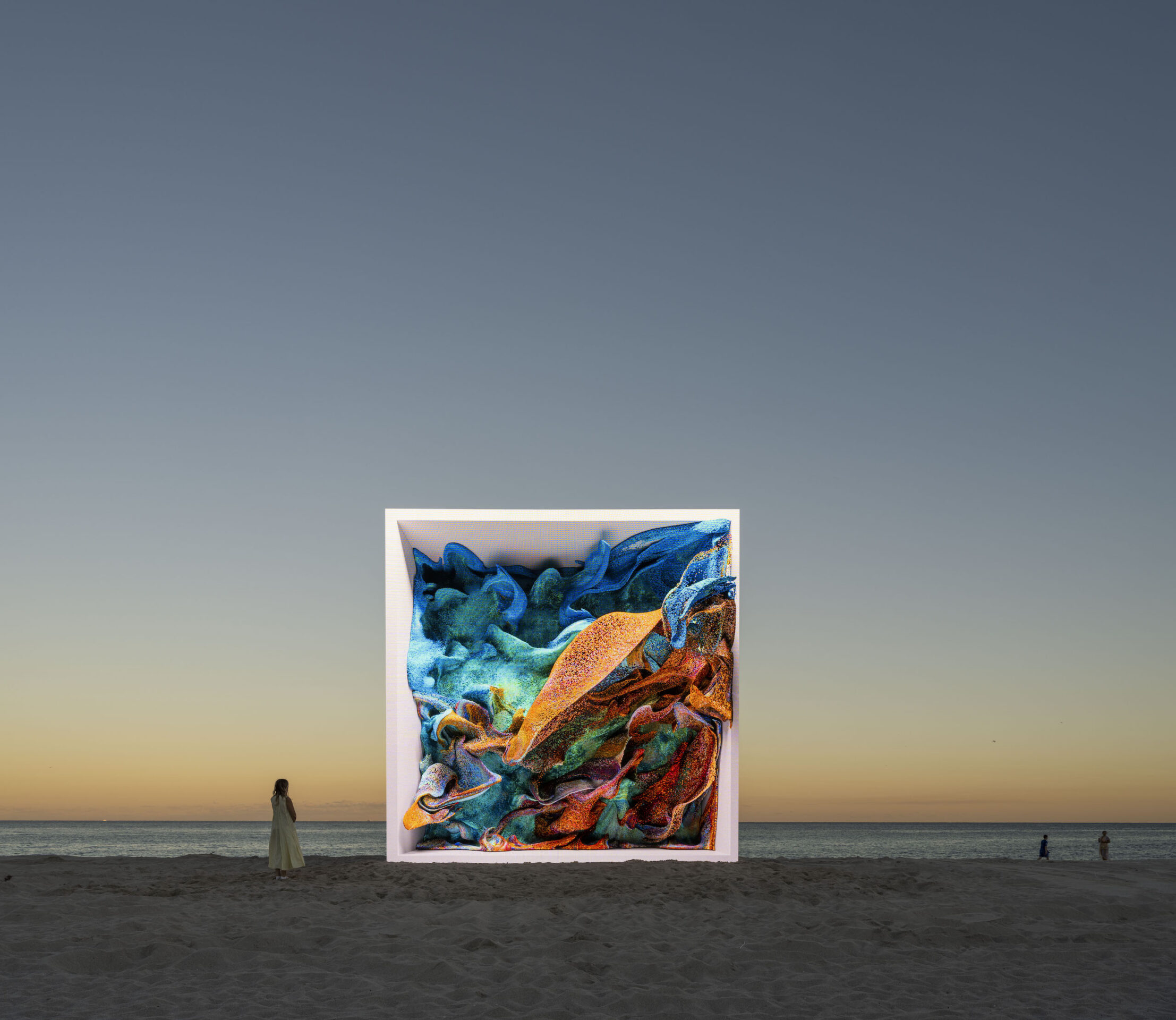

As part of the offerings in our digital magazine, we’ve launched Dispatches From the Art World, a series of guest essays that investigate the latest and most fascinating opinions and trends shaping the industry. This essay by Anika Meier, the Kunstforum columnist, art historian, and expert on digital art and NFTs, focuses on the changing landscape of the NFT art scene.
Edited by: Chris Erik Thomas, Digital Editor of Art Düsseldorf.
Ever since the hype surrounding NFTs began, artists have had to answer one question over and over again: Why pay money for it? And then so much. 69 million for an image file that you can download with one click on the Internet? It has been explained over and over again that NFTs are digital certificates of authenticity. While 69 million people can download an image file and share it on social media, only one person, if it’s a 1/1, can own and resell that image file.
The excitement was great, the lack of understanding even greater, because this was supposed to be the great revolution in art. And, no matter how irritated one is by the three letters NFT, it can no longer be ignored or denied that, just under a year after the hype began, a new online art world has emerged that has little to do with what the old offline art world has to offer. New artists: Beeple, Pak, XCopy, Fewocious, Justin Aversano. New Marketplaces: Nifty Gateway, SuperRare, Foundation, Quantum, OpenSea. New magazines: Right Click Save, Outland.
And of course, it seems a bit whimsical, the new online art world that doesn’t care much about the old offline art world. Beeple’s auction record at Christie’s should make it clear that something is moving. It was a bang that couldn’t be ignored. And then, a little over a year after the historic event, Beeple, aka Mike Winkelmann, is delighted on Twitter that he’s been able to “add value to NFTs through physical art and airdrops” and make something like a subscription to a single work of art out of it.
To me being able to add additional utility to NFTs through both physical art and airdrops that allow them to almost act as a subscription to a single work of art that can continue to evolve over time is something very exciting and unique to this new medium. 🙏🙏🙏
— beeple (@beeple) March 26, 2022
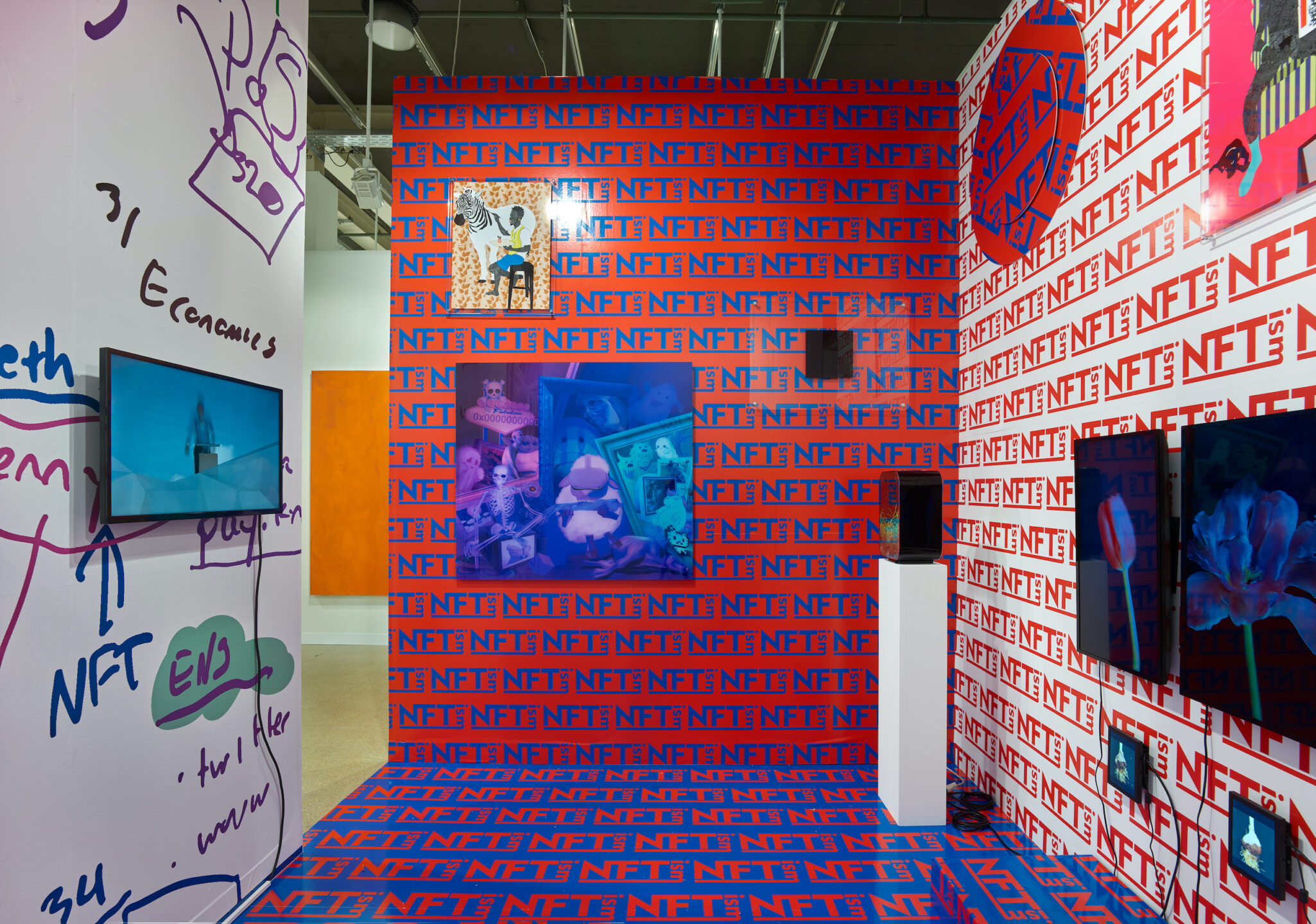
"Crypto Kiosk“ curated by Kenny Schachter. With works by Kevin Abosch, Olive Allen, Sarah Friend, Rhea Myers, Kenny Schachter, and Theo Triantafyllidis. Galerie Nagel Draxler. Art Basel, 2021. Photo: Simon Vogel.
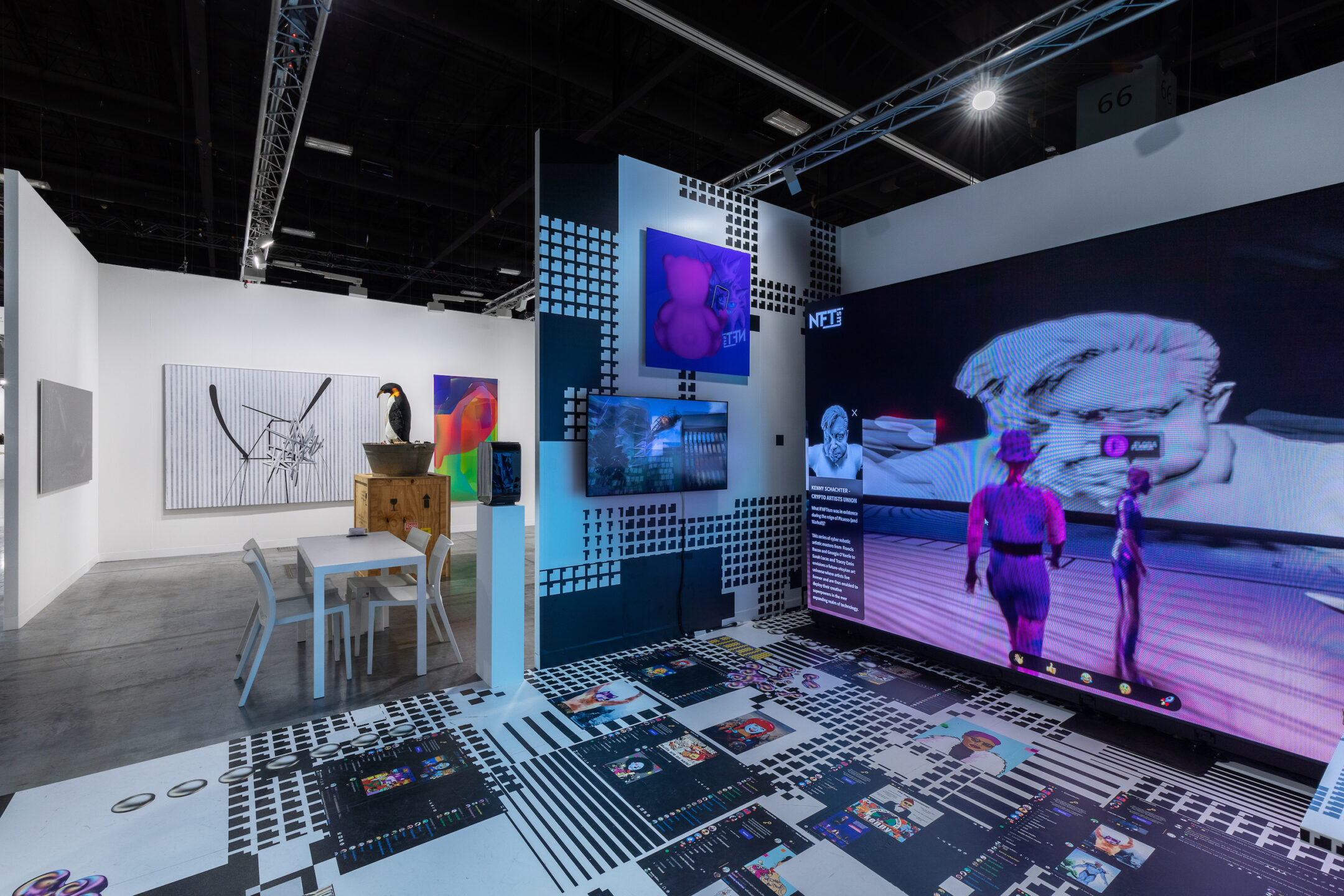
"Metaverse“ curated by Kenny Schachter. With works by Kevin Abosch, Olive Allen, Sarah Friend, Osinachi, DotPigeon, Anna Ridler, Kenny Schachter, and Theo Triantafyllidis. Booth Galerie Nagel Draxler, Art Basel, Miami Beach 2021. Photo: Dawn Blackman.
Wait, there was something. The story goes like this: NFTs enable digital art to finally be sold in the same way as the classic media of painting and sculpture, because the blockchain regulates who owns such an NFT. Among other things, Beeple said in interviews: “I do view this as the next chapter of art history. Now there is a way to collect digital art.”
The market exploded. For months we heard about record sales: Nyan Cat ($590,000), Fewocious ($19 million), CryptoPunks ($23 million), Ix Shells ($2 million), XCopy ($7 million), etc. etc. Then the setback. In December 2021, the online magazine Hyperallergic summarized the results of a study that took a closer look at the NFT market.
Democratization? Revolution? The numbers say otherwise: the NFT market reproduces the dynamics of the art market: 10% of collectors are responsible for as many transactions as the remaining 90%. The average selling price of 75% of NFTs is only US $15. Only 1% of NFTs sell for more than US $1594. Another study was published in February 2022 that looked at networks in the NFT scene using the example of the NFT platform Foundation. If you want to sell NFTs on Foundation, you need an invitation from an artist who has already sold on Foundation. This study also shows that the NFT art market works in a similar way to the traditional art market: a large number of artists offer works, but only a small number actually sell, including artists who were early on the platform. So it’s again about the right network and standing out, be it with a story or with innovation.
NFTs have become better stamp cards, like those you know from the supermarket or the coffee shop on the corner.
Even Jeff Koons, who probably still feels (like everyone else) that he’s a bit late with NFTs, had to come up with something. Ai Weiwei launched a virtual currency with Irish conceptual artist Kevin Abosch back in 2018 to spark a discussion about the value of human life. With his NFT drop “Currency” in 2021, Damien Hirst also pursued the goal of promoting the debate about values, albeit with an eye on art. Collectors must decide whether they want to keep the NFT or have the physical version of the currency.
Tom Sachs turned his NFT drop into a rocket factory. The three rocket parts (nose, body, and tail) were randomly sold as NFTs. If you wanted, you could combine the individual parts that did not belong together into a “Frankenrocket” or trade three matching individual parts on the secondary market to get a “Perfect Rocket”. The individual NFTs were then burned and the rocket was minted as a new NFT. And it goes even further: if you want, you can get the right physical rocket and a launch date for the rocket. Well, since it’s not a real rocket, such a launch can only fail: the physical individual parts are then put together again and sent to the owner together with video documentation. Together with the digital rocket, these three components form the Holy Trinity, as can be seen on the project website. Or in other words, “a singular transdimensional NFT, and it is yours to keep.”
Of course, Jeff Koons didn’t have much left. He actually has to go to the moon with his art and the NFTs because all other attention-grabbing and conceptually strong topics seem to have already been occupied: soul on the blockchain (Rhea Myers), DNA on the blockchain (Rachel Rossin), and shared artistic practice on the blockchain (Jonas Lund). Has anyone actually been waiting for Jeff Koons’ NFTs?
While artists from the traditional art world seem keen to get involved when it comes to NFTs, $69 million for Beeple and $91.8 million for Pak (“The Merge”) probably sound attractive, artists from the new online art world have already arrived in the post-NFT era. What does that mean?
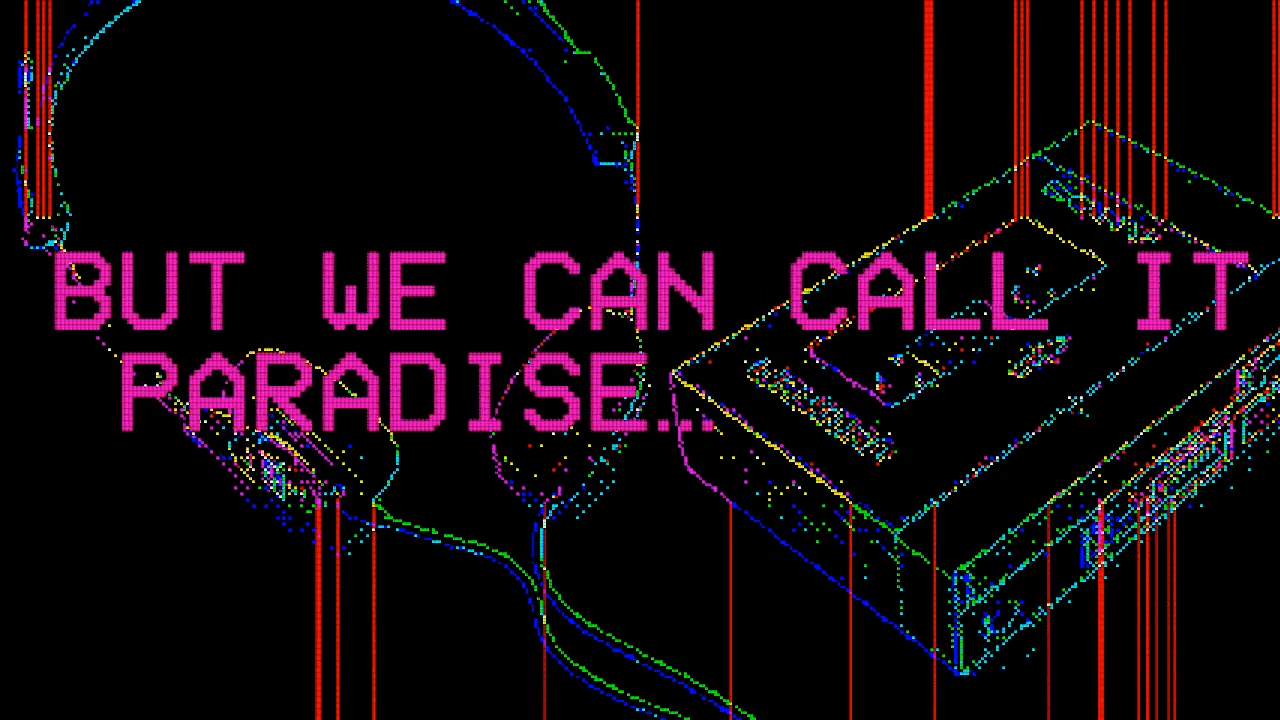
Skye Nicolas. "BUT WE CAN CALL IT PARADISE", 2022. NFT. Courtesy PRISKA PASQUER, Cologne.
From the early beginnings of computer art (including Herbert W. Franke, Vera Molnar, Frieder Nake, and Manfred Mohr) to the NFT hype. If you’re less generous with the timing, from the beginnings of the blockchain to the introduction of the Non-Fungible Token Standard in early 2018.
From the launch of the Non-Fungible Token Standard in early 2018 to the end of the NFT hype year of 2021, with Pak’s NFT drop “The Merge” on Nifty Gateway.
With Beeple’s tweet at the end of March 2022, answering the question about the utility has become a matter of course.
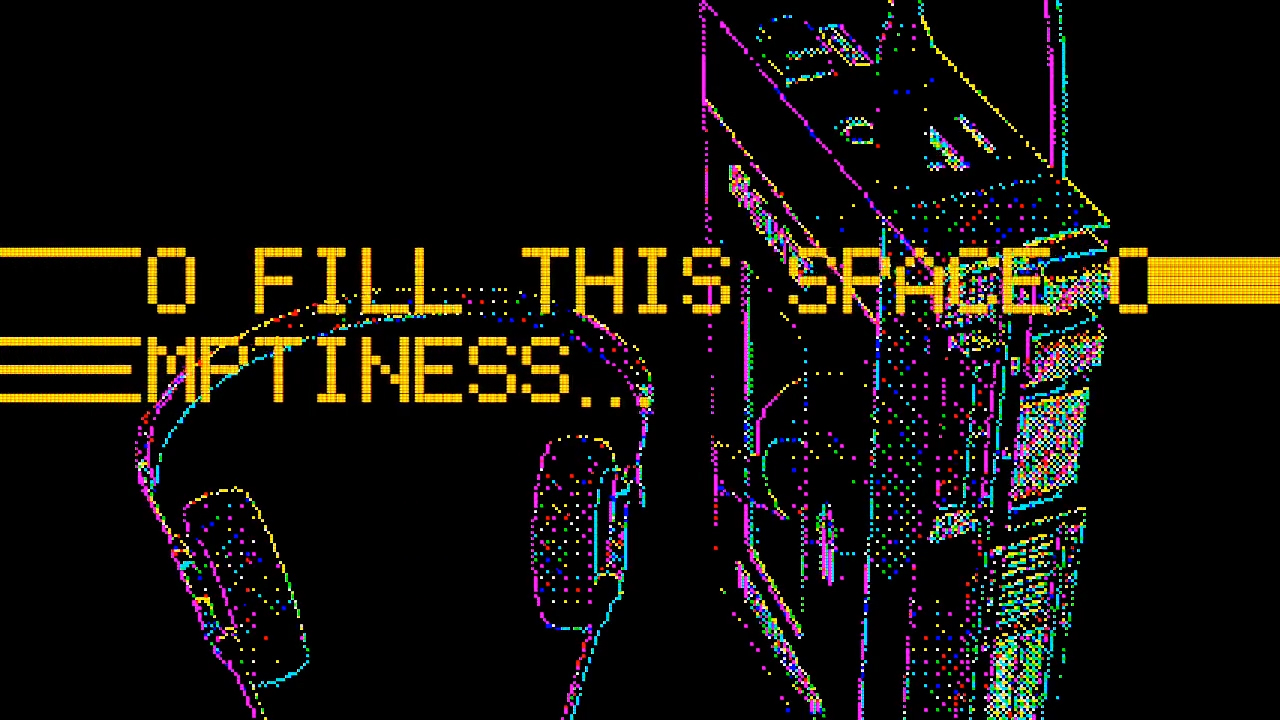
Skye Nicolas. "TO FILL THIS SPACE OF EMPTINESS", 2022. NFT. Courtesy PRISKA PASQUER, Cologne.
What is an NFT besides an NFT? A ticket to the Metaverse (Clone X, Fewoworld), a membership card for a community (Bored Ape), and an entitlement to future mints and airdrops (e.g., Refik Anadol). Basically, NFTs have become better stamp cards, like those you know from the supermarket or the coffee shop on the corner. And of course, it’s about more than a free broccoli cuddly toy or a few euros saved when buying a pan.
Above all, post-NFT also means that NFTs and thus the interest in digital art have become so commonplace that NFTs and digital art also want to be experienced in physical space. This sometimes gets a bit spectacular: the NFT platform Aorist set up a huge screen by Refik Anadol right on the beach for Art Basel Miami Beach. For three weeks in April, Bright Moments presents the NFT Art Berlin event in Berlin at the Kraftwerk. The numerous names listed on the poster probably mean nothing to regular visitors to the Gallery Weekend and Berlin Art Week. The new online art world shows itself there, with immersive experiences and live minting, with CryptoBerliners and Crypto Artists. Vellum LA and Superchief Gallery NFT like to display NFTs on large screens in public spaces.
Artblocks now has a location in Marfa, Texas, a house showcasing generative art, and Quantum will soon be opening its first location in Los Angeles. Nagel Draxler has opened another gallery location for NFTs in Berlin with the Crypto Kiosk, and Priska Pasquer is showing NFTs at Art Düsseldorf. And Beeple, yes, he is showing an exhibition of paintings and prints at the Jack Hanley Gallery in New York entitled “Uncertain Futures”.
The Art Basel and USB Global Art Market Report has just been published, and for the first time, NFTs were also comprehensively taken into account. 74% of high net worth collectors bought art NFTs in 2021. And while almost all high net worth collectors, 88% of those surveyed, would like to buy NFTs in the future, not even half of the galleries are interested in selling NFTs. Of the high net worth collectors who have already bought NFTs, only 8% use an NFT platform, the vast majority trusting galleries and auction houses.
This finally answers the question of what you still need galleries for. For the presentation of (digital) art at fairs and in galleries. For the mediation and contextualization of the work. And for selling NFTs to traditional art collectors.